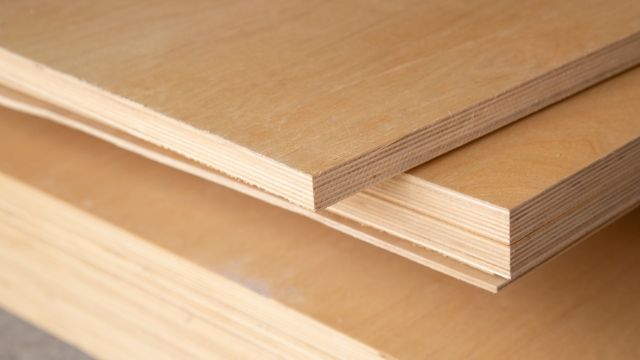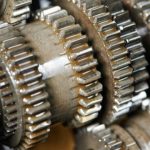Let’s examine in more detail the two materials that are widely used in the furniture and building industries: plywood and HDHMR. These two materials are frequently utilised in the production of cabinets, furniture, and other fixtures. Evaluating the advantages and disadvantages of the two can assist prospective purchasers and builders in arriving at a well-informed choice. Now, let’s get started on this interesting and educational discussion about HDHMR vs plywood.
HDHMR Vs. Plywood: The Ultimate Guide to Choosing the Best Material
In the realm of construction and furniture, material selection is the cornerstone of each project. What material you choose can have a big impact on the final result, both in terms of longevity and appearance. In this industry, plywood and HDHMR are two titans. As well-liked options, they each offer a unique combination of qualities. We will examine the subtle differences between HDHMR and plywood in this extensive guide to help you make an informed decision for your upcoming project.
Understanding the Basics
Before delving deeply into the comparison analysis, let’s review the fundamentals of plywood and HDHMR.
HDHMR: High-Density High Moisture Resistant is a relatively new product on the market that stands out for having both high density and moisture resistance. It is produced by mixing wood fibres with a specific resin and subjecting the mixture to high heat and pressure, producing a product with excellent moisture and durability.
Plywood: For many years, plywood was a necessary component in the building and furniture industries. It is made out of thin wood veneer layers that are bonded together tightly, each layer being positioned at a right angle to the one before it. This method of cross-graining adds durability and keeps the material from warping.

Strength and Durability
There are advantages to both HDHMR and plywood in terms of strength and longevity.
HDHMR: HDHMR’s high density characteristic allows it to support a significant weight, which makes it a great option for heavy-duty fixtures and furniture. It also has a longer lifespan because to its strong moisture resistance, which guards against swelling and other water damage.
Plywood: plywood is renowned for its structural strength because of the layering process that goes into its production. This multi-layered construction provides well-balanced stability, avoiding warping and retaining its shape for a considerable amount of time.
Working with the Materials
Craftsmanship requires materials that are both easy to work with and long-lasting. Let’s see how plywood and HDHMR perform in this area.
HDHMR: Because HDHMR is dense, it needs specific equipment to be cut and shaped. But once mastered, it provides a polished finish and a flat surface perfect for veneers and laminations.
Plywood: This material is rather easy to work with, shape, and install. It is also quite adaptable. Because of its mild bending flexibility, it can be used for many different purposes, including curved surfaces—something that is difficult to accomplish with other materials.
Environmental Impact
It is essential to comprehend the ecological footprint of the materials we use in this day and age of environmental concern.
HDHMR: HDHMR is said to be environmentally beneficial since it makes use of wood fibres, which are frequently obtained from wood waste, encouraging recycling and lowering the need for new timber supplies. Additionally, waste is kept to a minimum during the HDHMR manufacturing process.
Plywood: However, the process of making plywood may occasionally call for the use of hazardous adhesives that discharge volatile organic compounds (VOCs) into the surrounding air. However, initiatives are in place to manufacture plywood using more ecologically friendly adhesives, therefore lessening the material’s impact on the environment.
Visual Flexibility
Each material offers definite advantages in terms of aesthetics.
HDHMR: HDHMR provides a homogeneous, smooth surface that is ideal for a range of finishes, such as veneers and laminates. Its consistency enables consistent outcomes, which helps interior designers achieve a unified style.
Plywood: Plywood has a natural wood grain appearance that can be accentuated to highlight its innate beauty with different finishes. Its flexibility to be formed into curved surfaces provides additional opportunities for creative and inventive designs.
Cost-Effectiveness
The choice of material can frequently be influenced by cost.
HDHMR: The cost of HDHMR, an excellent engineered wood product, is commensurate with its characteristics and longevity. But in the long run, given its durability and low maintenance requirements, it might be a more affordable option.
Plywood: Depending on the type and grade selected, plywood is available at a variety of price points. Although premium plywood can be pricey, there are still less priced solutions that don’t sacrifice too much quality.
Conclusion
Picking between HDHMR and plywood requires taking into account a number of variables, such as the project specifications, financial constraints, and individual preferences. Plywood provides both structural strength and aesthetic variety, whereas HDHMR is distinguished by its high density and resistance to moisture.
In conclusion, there is no obvious winner in the competition between HDHMR and plywood because each material has particular benefits of its own. The particular requirements of your project and your comprehension of the distinctive qualities that every material offers should guide your decision.
With the help of this guide, we hope you can make well-informed decisions that will provide stunning and long-lasting effects.
FAQs:
Q 1: What Is HDHMR and How Is It Different from Conventional Wood?
Ans: Reaction: High-Density High Moisture Resistant board is a form of engineered wood with the acronym HDHMR. The process involves mixing wood fibres with a unique resin, which is then heated to a high temperature and pressure to create a high-density product. This method yields a material that is more denser and more moisture-resistant than plywood or conventional wood, which makes it especially appropriate for locations that are exposed to dampness.
Q 2: Is It Okay to Use Plywood Outside?
Ans: Although plywood is a very adaptable material, whether it is suitable for outdoor use primarily relies on the kind of plywood selected. Marine-grade plywood is the best option for outdoor and marine applications since it has been carefully treated to resist water. Regular plywood, on the other hand, may not be the ideal option for outdoor projects without additional protective treatments, like painting or sealing to stop moisture intrusion, as it is more prone to water damage.
Q 3: Is HDHMR or Plywood a Better Material for Water Resistance?
Ans: In terms of water resistance, HDHMR has a little advantage over plywood because of its high-density structure and unique manufacturing method. This procedure gives it more moisture resistance than regular plywood, so when it comes in contact with water, it is less likely to swell or get damaged. It is important to remember, though, that marine-grade plywood is made expressly to resist exposure to water and does so rather well.
Q 4: Is it Possible to Use HDHMR to Get a Natural Wood Finish?
Ans: Yes, it is possible to obtain a natural wood finish with HDHMR boards, despite their smoother, more uniform surface than plywood’s granular texture. It is a great foundation for laminates and veneers that imitate the natural wood grains of wood, giving you the added advantages of moisture resistance and increased density while still achieving the desired appearance.
Q 5: Which Material is a Better Option for Furniture in Terms of Cost-Effectiveness?
Ans: The precise specifications of your project and your budget are two elements that can affect how cost-effective HDHMR and plywood are. Because of its sophisticated qualities, HDHMR may initially cost more, but it also offers endurance and low maintenance, which could save money over time. In contrast, plywood comes in a variety of pricing ranges and can be a more cost-effective option, particularly for premium versions that don’t significantly sacrifice strength or beauty. It is advisable to assess both choices in light of the particular requirements of your project in order to make an informed choice.
Santosh Kumar, the author behind IndiasStuffs.com, is passionate about sharing valuable insights on a variety of topics, including lifestyle, technology, and Indian culture.
Page Contents

